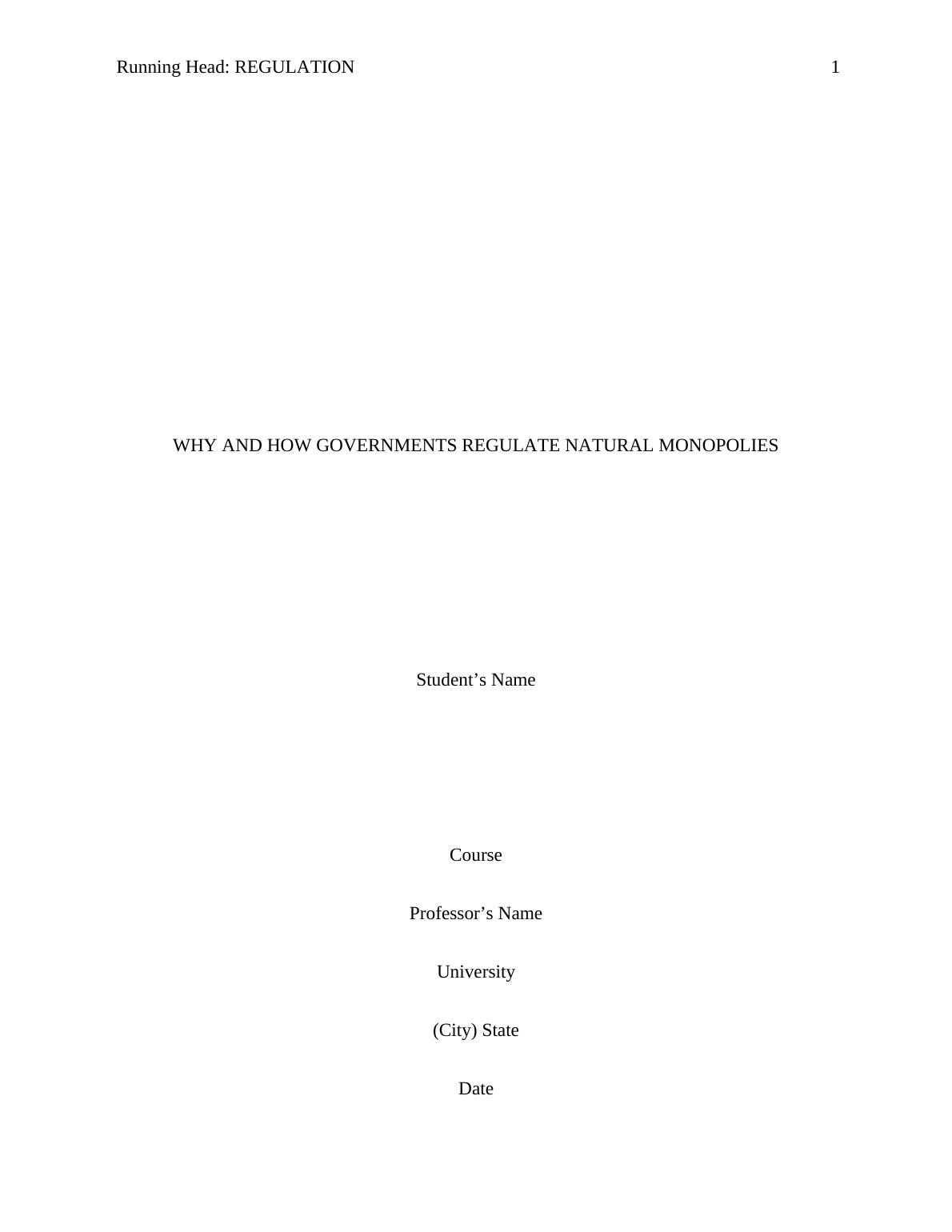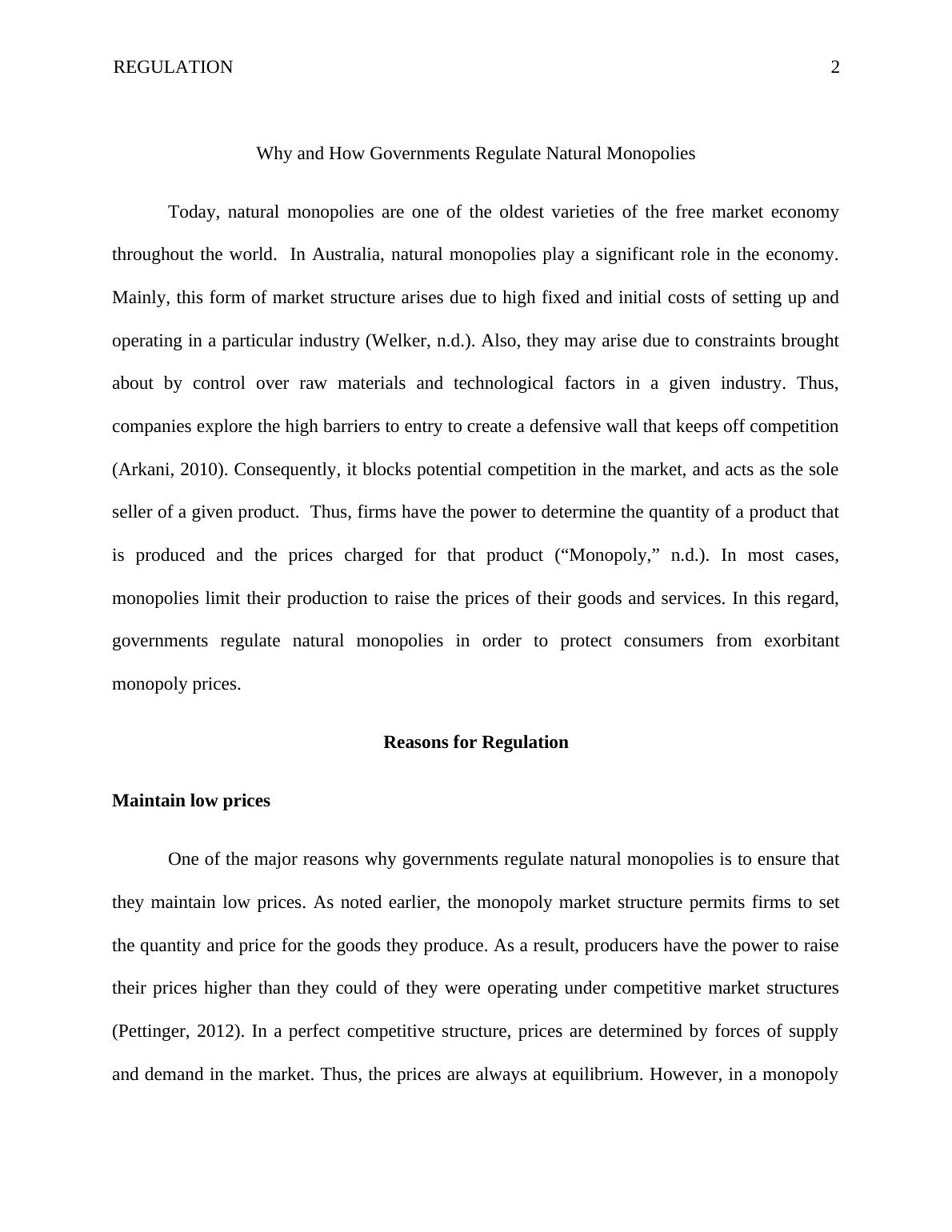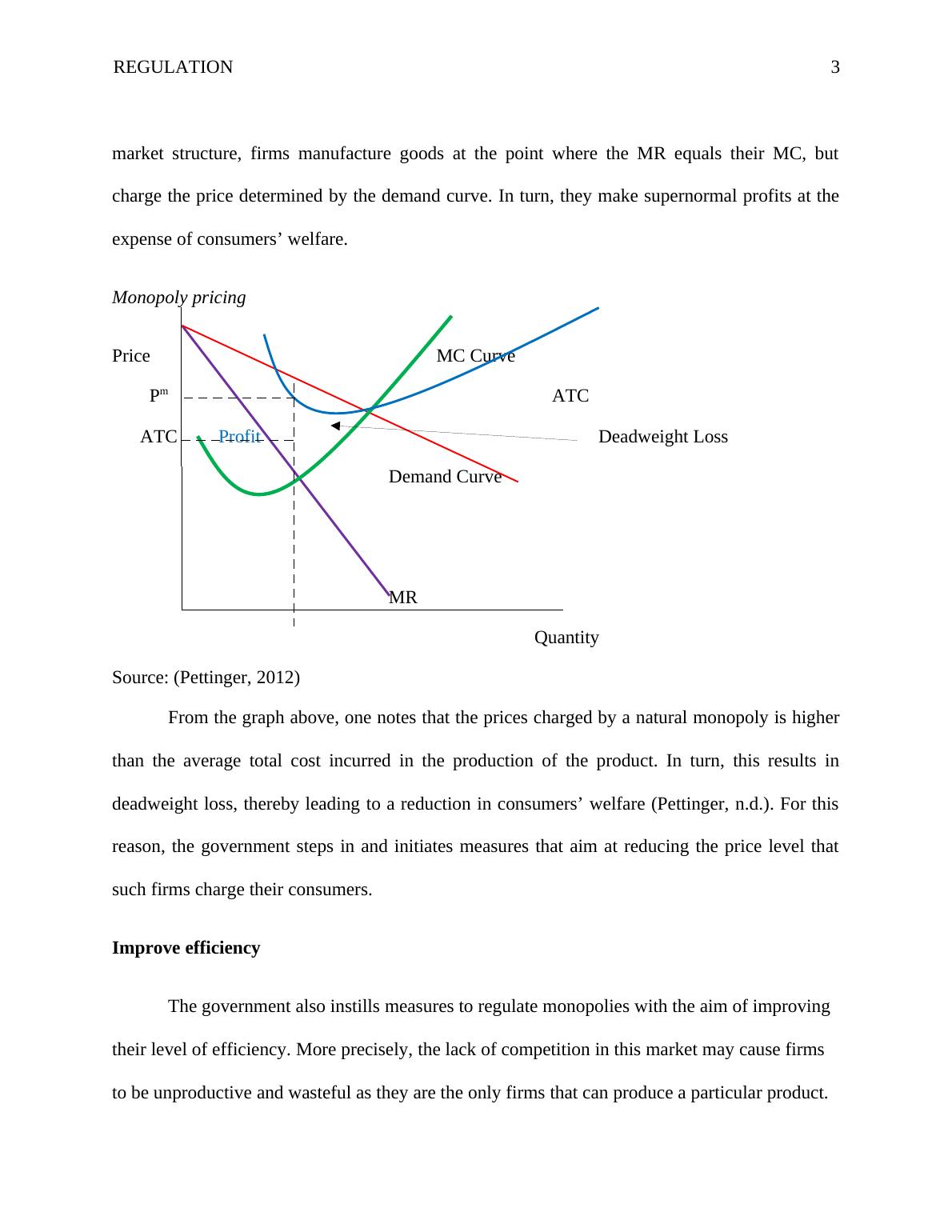Natural Monopoly in Australia
Added on 2020-02-24
8 Pages1691 Words67 Views
Running Head: REGULATION 1WHY AND HOW GOVERNMENTS REGULATE NATURAL MONOPOLIESStudent’s NameCourseProfessor’s NameUniversity(City) StateDate

REGULATION 2Why and How Governments Regulate Natural MonopoliesToday, natural monopolies are one of the oldest varieties of the free market economythroughout the world. In Australia, natural monopolies play a significant role in the economy.Mainly, this form of market structure arises due to high fixed and initial costs of setting up andoperating in a particular industry (Welker, n.d.). Also, they may arise due to constraints broughtabout by control over raw materials and technological factors in a given industry. Thus,companies explore the high barriers to entry to create a defensive wall that keeps off competition(Arkani, 2010). Consequently, it blocks potential competition in the market, and acts as the soleseller of a given product. Thus, firms have the power to determine the quantity of a product thatis produced and the prices charged for that product (“Monopoly,” n.d.). In most cases,monopolies limit their production to raise the prices of their goods and services. In this regard,governments regulate natural monopolies in order to protect consumers from exorbitantmonopoly prices.Reasons for RegulationMaintain low prices One of the major reasons why governments regulate natural monopolies is to ensure thatthey maintain low prices.As noted earlier, the monopoly market structure permits firms to setthe quantity and price for the goods they produce. As a result, producers have the power to raisetheir prices higher than they could of they were operating under competitive market structures(Pettinger, 2012). In a perfect competitive structure, prices are determined by forces of supplyand demand in the market. Thus, the prices are always at equilibrium. However, in a monopolymarket structure, firms manufacture goods at the point where the MR equals their MC, but

REGULATION 3charge the price determined by the demand curve. In turn, they make supernormal profits at theexpense of consumers’ welfare. Monopoly pricing PriceMC CurvePmATC ATCProfit Deadweight LossDemand CurveMRQuantity Source: (Pettinger, 2012)From the graph above, one notes that the prices charged by a natural monopoly is higherthan the average total cost incurred in the production of the product. In turn, this results indeadweight loss, thereby leading to a reduction in consumers’ welfare (Pettinger, n.d.). For thisreason, the government steps in and initiates measures that aim at reducing the price level thatsuch firms charge their consumers. Improve efficiency The government also instills measures to regulate monopolies with the aim of improving their level of efficiency. More precisely, the lack of competition in this market may cause firms to be unproductive and wasteful as they are the only firms that can produce a particular product. Often, they have little incentive to improve the quality of the goods and services that they

End of preview
Want to access all the pages? Upload your documents or become a member.
Related Documents
Monopoly of Alpha Question Answer 2022lg...
|4
|772
|20
Assignment Regulation Of Monopolieslg...
|12
|2241
|158
Microeconomics - Monopoly and Perfect Competitionlg...
|6
|1080
|283
Monopolistic Competitive Marketlg...
|7
|849
|48
Market Structure and its Types - Deskliblg...
|7
|942
|88
(PDF) Business and Economics Researcheslg...
|11
|1981
|107